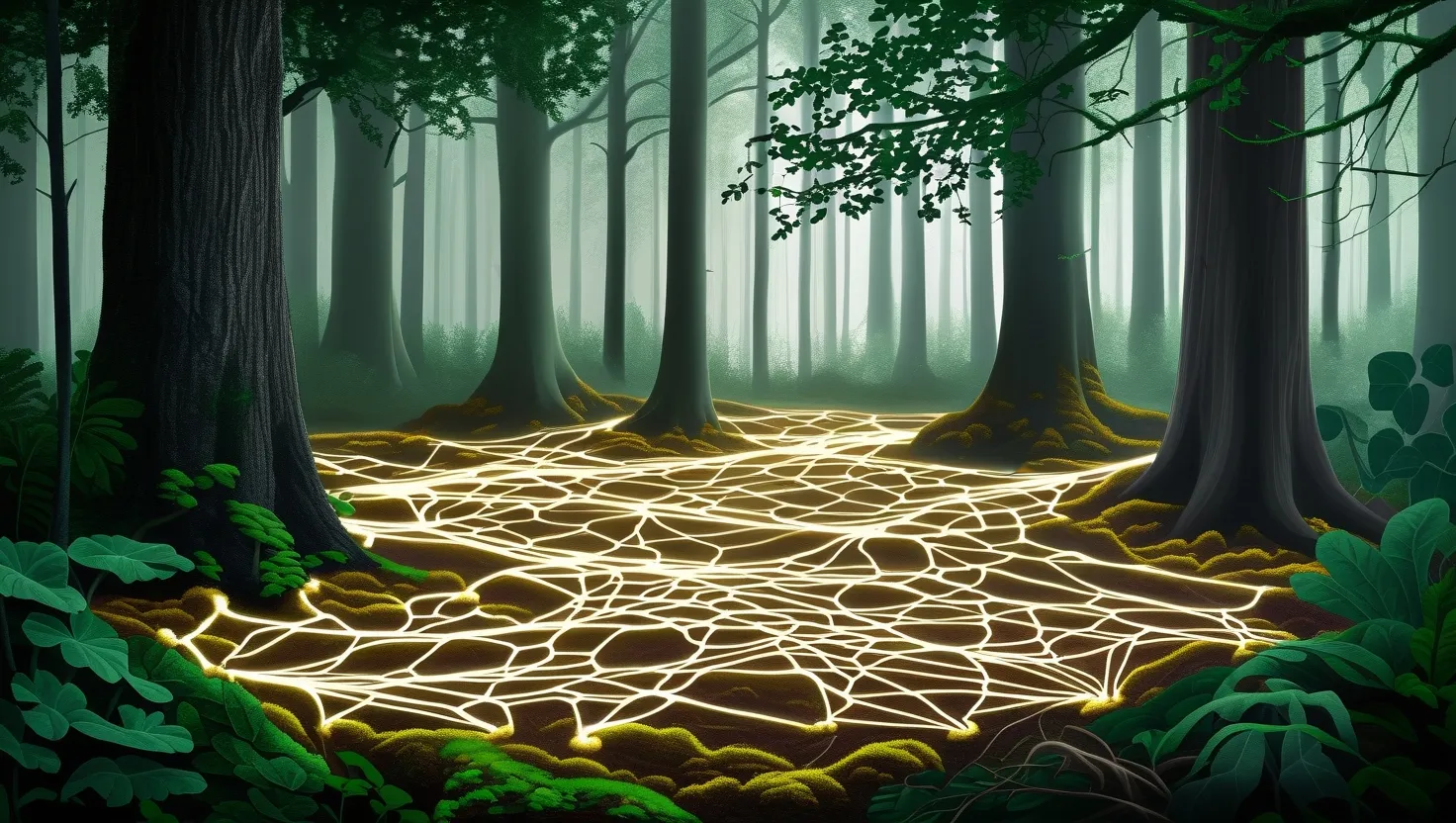The ancient stones of Göbekli Tepe whisper secrets that challenge our understanding of human history. As I stand amidst the megalithic pillars, their weathered surfaces etched with mysterious symbols, I can’t help but wonder what knowledge lies buried beneath our feet. Recent geological surveys have detected unusual electromagnetic patterns deep below the archaeological site, sparking intense debate about the true nature and purpose of this enigmatic place.
Ground-penetrating radar has revealed complex crystalline structures some 20 meters beneath the visible ruins. These formations create localized magnetic anomalies that interfere with modern measurement equipment, hinting at properties beyond simple stone and earth. Scientists have documented unexplained radiation signatures and electromagnetic disturbances near specific pillars, leading some to speculate about advanced ancient technology.
But what if these anomalies are more than mere geological curiosities? What if they point to a level of prehistoric knowledge far beyond what mainstream archaeology acknowledges?
Classified reports from recent excavations describe the discovery of mineral compositions in the deeper layers that defy conventional explanation. These materials show evidence of precise manipulation that seems to exceed the known capabilities of Neolithic peoples. Multiple research teams have reported bizarre equipment malfunctions and data corruption when attempting to analyze these samples. Is this simply the result of ancient mineral deposits, or could it be evidence of something more?
“The past is never dead. It’s not even past.” - William Faulkner
This quote takes on new meaning as we peel back the layers of time at Göbekli Tepe. The site’s careful astronomical alignments and its apparent relationship to Earth’s magnetic field fluctuations suggest a level of sophistication that forces us to reconsider our assumptions about ancient knowledge. Some researchers propose that the entire complex may have functioned as an energy collection or manipulation system, tapping into the planet’s natural electromagnetic currents.
Critics argue that these patterns can be explained by natural geological processes, but the precision of the alignments and the consistency of the anomalies across the site challenge such simple explanations. How do we reconcile the accepted narrative of human technological development with the evidence before us?
The controversy surrounding Göbekli Tepe intensified when similar energy signatures were detected at other ancient sites around the globe. This network of structures, all exhibiting comparable electromagnetic anomalies, hints at a shared knowledge or purpose that spanned continents in prehistoric times. Could our ancestors have possessed a deeper understanding of Earth’s hidden energies than we previously believed?
As I run my hand along the cool surface of a T-shaped pillar, I can’t help but feel a connection to those who stood here thousands of years ago. What did they know that we have forgotten? And why does it seem that some are so eager to dismiss or explain away the evidence that challenges our current paradigms?
The case of Göbekli Tepe raises profound questions about prehistoric technological capabilities and the potential for modern efforts to control information about our ancient past. Are we witnessing the suppression of knowledge that could rewrite history books, or are these simply the fevered imaginings of those desperate to find mystery in the mundane?
“The most beautiful thing we can experience is the mysterious. It is the source of all true art and science.” - Albert Einstein
Einstein’s words resonate as we grapple with the unknowns of Göbekli Tepe. The beauty of the mysterious draws us in, compelling us to dig deeper and question our assumptions. But it also challenges established narratives and threatens to upend carefully constructed academic careers.
I spoke with Dr. Elena Vasquez, a geophysicist who has studied the site extensively. She shared her frustrations with the academic establishment’s reluctance to seriously consider alternative explanations for the anomalies at Göbekli Tepe. “There’s a fear of being labeled a crackpot,” she confided. “But science advances by challenging accepted wisdom. We have a responsibility to follow the evidence, wherever it leads.”
Her words echo in my mind as I consider the implications of what has been discovered here. If Göbekli Tepe truly represents a level of technological advancement far beyond what we’ve attributed to Neolithic peoples, how much of our understanding of human history might need to be revised?
The possibility of ancient advanced knowledge hidden in plain sight is both thrilling and unsettling. It forces us to confront our own biases and preconceptions about the capabilities of our ancestors. Could they have understood and harnessed natural forces in ways we’re only beginning to rediscover?
As the sun sets over the ancient pillars, casting long shadows across the excavated enclosures, I’m struck by the weight of unanswered questions. What other secrets might be buried beneath our feet, not just here but at sites around the world? And are we truly ready to confront the implications of what we might find?
“The day science begins to study non-physical phenomena, it will make more progress in one decade than in all the previous centuries of its existence.” - Nikola Tesla
Tesla’s prescient words seem particularly relevant as we grapple with the mysteries of Göbekli Tepe. The non-physical phenomena detected at the site – the electromagnetic anomalies, the inexplicable energy signatures – push the boundaries of what we consider possible within the realm of ancient technology.
But why does the idea of advanced ancient knowledge provoke such resistance in academic circles? Is it simply a matter of protecting established theories, or is there a deeper fear at play? The notion that our ancestors might have possessed capabilities we’ve lost challenges our narrative of constant progress and technological advancement.
I posed this question to Dr. Marcus Chen, an archaeologist who has worked at Göbekli Tepe for over a decade. His response was measured but revealing. “We’re trained to be skeptical,” he explained. “But there’s a fine line between healthy skepticism and willful blindness. At some point, we have to be willing to consider explanations that fall outside our current understanding.”
As our conversation continued, Dr. Chen shared his own experiences with unexplained phenomena at the site. He described equipment malfunctions that occurred only in specific areas, and the eerie sensation of standing near certain pillars. “It’s as if there’s an energy you can almost feel,” he said, a hint of wonder in his voice. “I can’t explain it scientifically, but I can’t deny what I’ve experienced either.”
His words highlight the tension between empirical evidence and personal experience that often characterizes research at sites like Göbekli Tepe. How do we reconcile the inexplicable with our need for scientific rigor?
The controversy surrounding Göbekli Tepe extends beyond academia. Government agencies and private institutions have shown increasing interest in the site and its anomalies. Some researchers have reported pressure to downplay or reinterpret findings that don’t align with conventional explanations. This has led to accusations of deliberate suppression of information.
Are we witnessing an attempt to control the narrative around our ancient past? Or is this simply the natural resistance of established paradigms to new and challenging ideas?
As I prepare to leave Göbekli Tepe, I’m struck by the enormity of what remains unknown. The site has already revolutionized our understanding of Neolithic societies and the origins of organized religion. But what if that’s just the beginning? What if the true significance of this place lies in what it reveals about lost knowledge and forgotten capabilities?
The stones of Göbekli Tepe stand as a testament to human ingenuity and the enduring quest for understanding. They challenge us to look beyond our preconceptions and to consider possibilities that may seem outlandish at first glance. In doing so, they remind us that the greatest discoveries often come from questioning what we think we know.
As the ancient pillars fade into the distance, I’m left with a sense of both excitement and unease. The mysteries of Göbekli Tepe offer a tantalizing glimpse into our forgotten past. But are we truly ready to confront what we might find there? And what other secrets might be waiting to be uncovered, hidden in plain sight across the ancient landscapes of our world?
The journey to understand Göbekli Tepe and its implications is far from over. It challenges us to remain open to new possibilities, to question our assumptions, and to pursue the truth wherever it may lead. In the end, isn’t that the true spirit of scientific inquiry and human curiosity?
What hidden knowledge might we rediscover if we approach sites like Göbekli Tepe with truly open minds? And how might that knowledge reshape our understanding of who we are and where we come from?






